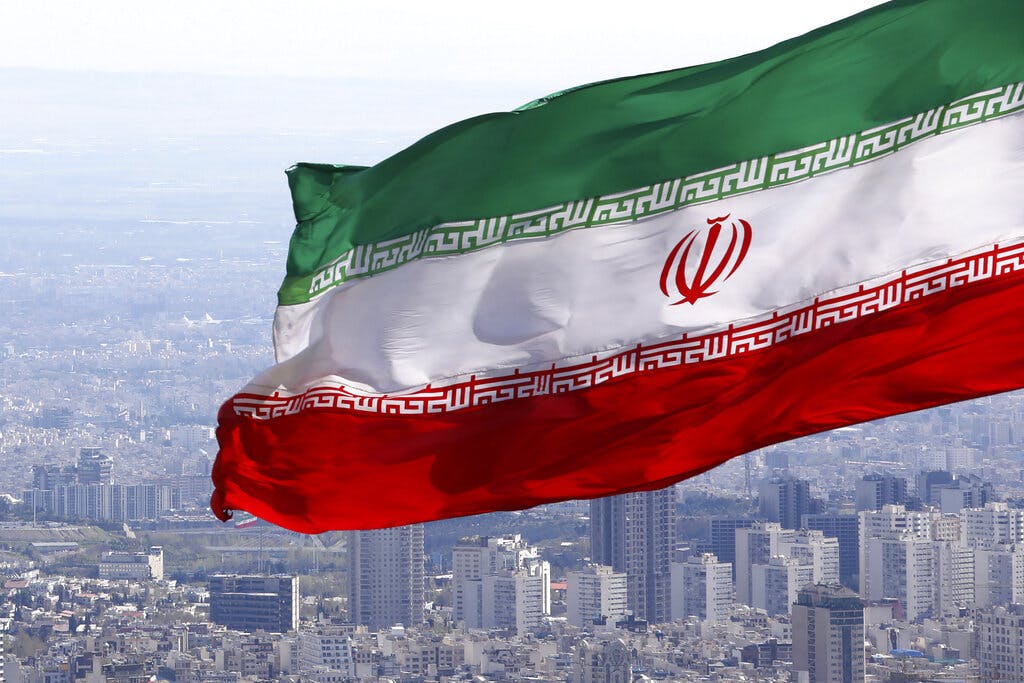Widespread Iranian Drone Threat in Focus on Eve of Biden’s Mideast Trip
Moscow, for one, is now taking advantage of the global embargo on Iranian arms sales being lifted in October 2020 as one of the “sunset” clauses in a Security Council resolution that endorsed the 2015 nuclear deal.

By disclosing intelligence on Iranian drone sales to Russia, the White House is shedding light on a weapon that will increasingly dominate war theaters in Ukraine, the Mideast, and beyond.
The national security adviser, Jacob Sullivan, related yesterday that the Iranians will be training Russian troops on the use of Iranian-made unmanned aerial vehicles. “Our information indicates that the Iranian government is preparing to provide Russia with up to several hundred UAVs, including weapons-capable UAVs on an expedited timeline,” Mr. Sullivan said.
In the past, the United Nations Security Council has banned any export of Iranian arms. Yet Moscow is now taking advantage of the global embargo being lifted in October 2020 as one of the “sunset” clauses in the council resolution that endorsed the 2015 nuclear deal.
America could impose new sanctions as part of the Stop the Iranian Drones Act, which passed the House and cleared the Senate Foreign Relations Committee but has yet to be approved by the entire upper body. If enacted, the legislation may slow Iranian drone sales, but it certainly will not put a full stop to such a lucrative source of income for the cash-strapped regime in Tehran.
Coming on the eve of President Biden’s trip to Israel and Saudi Arabia, Mr. Sullivan’s disclosure led to speculation that it was designed to coax the two Mideastern countries to become more active than they have been to date in supplying Ukraine with funds and arms.
Israel had once sold drones to Russia, but stopped delivering them after Moscow’s invasion of Ukraine. Kyiv has called on the Israeli defense industry to provide it with aerial defense hardware. As yet, no such sales have been made — or, if they were, neither side has acknowledged them. Yet, both Saudi Arabia and Israel are overly familiar with Iran’s growing drone fleet.
Along with missile development, drones are “the crown jewel of Iran’s military industry, overseen by various agencies, including the defense ministry and the Islamic Revolutionary Guards Corps,” a policy director at United Against Nuclear Iran, Jason Brodsky, told the Sun.
UAVs were once called a “poor-man’s air force.” Much cheaper than manned jets, and in some cases boasting a longer range and more versatility, they are now a useful tool in reconnaissance, and increasingly as an attack weapon. Iran started research on the use of crude battlefield drones as far back as in its 1980s war against Iraq.
Cloning other armies’ developments and investing vast funds in the domestic industry, Tehran is now one of the world’s largest drones exporters. So far, its UAVs, or versions thereof, have been used by Tehran’s proxies in Iraq, Yemen, Lebanon, Gaza, and elsewhere. They have also been employed in attacks on American assets and the disruption of civilian shipping lanes.
Long-range Iranian drones were developed specifically to reach any Mideast target from Iranian soil. As such, Tehran allies in Caracas and Havana would now be able to turn their countries into launching pads for attacks on American soil.
Proliferation of Iranian drones presents “a new and complex threat to our forces and those of our partners and allies,” the Central Command chief, General Kenneth McKenzie, told the Senate Armed Services Committee in April 2021. “For the first time since the Korean War, we are operating without complete air superiority. Until we are able to develop and field a networked capability to detect and defeat [UAVs], the advantage will remain with the attacker.”
Saudi oil refineries have been under near constant attack from Iranian-made killer drones controlled by the Tehran-backed Houthis in Yemen. Iranian and Iranian-made drones were launched against Israel from Gaza and Lebanon. The Israeli Defense Force has managed to intercept most such drone attacks, and the ones that made it through proved to be mostly unharmful.
According to several reports, Riyadh has secretly requested Israeli sales of UAVs, radar, early warning, and air defense systems — and with good reason. Last week three Hezbollah drones attempted to reach an Israeli gas rig in the Mediterranean, known as Karish. The IDF’s F-16 jets intercepted one of the drones, while the other two were downed by a new missile class, Barak-8, launched from a nearby IDF vessel.
Israel has been attacking UAV bases in Syria and Lebanon, as well as some on Iranian soil, reports say. In March “suicide drones” attacked an airbase in western Iran, near Kermanshah, destroying “hundreds” of UAVs on the ground. In May, a separate drone attack launched from inside Iran hit a UAV research facility at Parchin.
Regardless, the Tehran regime “will keep developing, expanding, and proliferating its armed UAV technologies—not just to Middle Eastern proxies, but also to countries further abroad,” including Venezuela, an associate fellow at the Washington Institute, Farzin Nadimi, wrote in March.
Russia was once a proud exporter of military hardware. Its MiGs, SCUDs, and Sikorskis topped the wish lists of Soviet-allied militaries during the Cold War. In Ukraine, though, the Russian army has been exposed as a backward, outdated, ill-trained battle force. Moscow is now forced to rely on a one-time client and current ally, Iran, to modernize and bolster its aerial capabilities in the Ukrainian theater.
Israel and Saudi Arabia may not immediately leap to overtly arm or finance Ukraine, but when it comes to understanding the global threat of Iran’s drone industry, neither country needs lectures from the White House.

